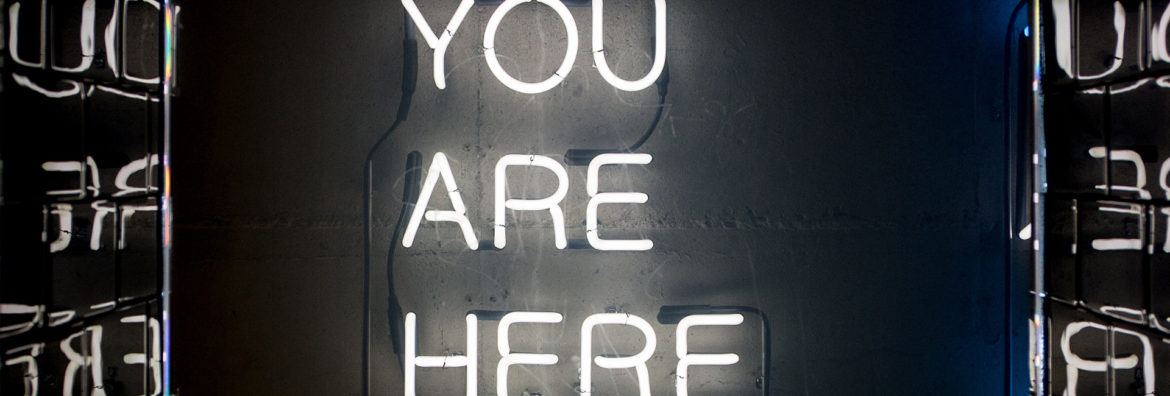Before you spin up surveys, consultants and new initiatives in your organization to transform the culture, each senior leader needs to ask themselves one question:
Is it me?

Before you spin up surveys, consultants and new initiatives in your organization to transform the culture, each senior leader needs to ask themselves one question:
Is it me?

As Winston Churchill once proclaimed, “History is written by the victors.” While this sentiment may hold a bit less weight in today’s society where even the “losers” can shape the collective narrative with the help of things like the internet, the “winners” do tend to hold quite a bit of power over shaping how future generations interpret the events of the past.
One way to shape peoples’ interpretation of the past is to remove and replace the physical artifacts of a people. The statues, monuments, images, the schoolbooks and stories that do not align with the version of history that you wish to promote. Read More…

I once worked with a CEO of a successful startup. His company had been experiencing growing pains and customer-service mishaps that led to a decline in performance. During a leadership meeting designed to review recent irregular operations, he raised his hand and took ownership of the problem with a blunt assessment.
“The fish stinks at the head,” he said.
In other words, the organizational issues stemmed from leadership errors. These mistakes at the top of an organization can easily trickle down to create cultural issues throughout the team.
Companies undergo cultural assessments for a variety of reasons—and they’re not always because things have gone awry. A company might have a great culture that it wants to preserve during a growth phase. Or it might want to evolve the company’s culture to keep pace with a leadership change, market shift or relocation.
Other times, companies need to know why something unexpected has happened. Leaders might be trying to address increased turnover, decreased market share, a drop in productivity or something as major as ethical violations. Unfortunately, leaders don’t always understand what the aforementioned CEO identified: Organizational issues often go much deeper than culture. Read More…

My son turns eleven today. We are all set to celebrate as we always do – our kids love the traditions that come with birthdays, Christmas, Thanksgiving, college football, and too many other events to mention. The house is decorated exactly the same for every birthday. I’m told they love it that way. There will be a special dinner, as always.
All this tradition and consistency got me thinking. My children certainly love new things and surprises: new adventures, trips to unknown places, crazy experiences. And still, for a handful of personal milestones, they seem to want- to need- something familiar and dependable. Certainly, that is to be expected. New experiences bring excitement, anticipation of something unknown, and the possibility of “total awesomeness” (which, I have to imagine, is what the kids are saying nowadays.) Those traditions, the patterns sought out by their own brains, bring them a sense of stability, safety, and comfort. See my recent innovation webinar for more on this. Read More…

By Katie Burke
Last year, HubSpot’s Culture Code went viral. The SlideShare, created by our CTO and co-founder Dharmesh Shah, inspired comments and compliments from partners, customers, industry experts, and competitors alike. The deck itself is remarkable, but to me what’s more important than the document is the degree to which we practice what we preach.
At the end of the day, a company’s culture isn’t about ping-pong tables, free snacks or perks. It’s about collective expectations for how you hire, fire, and work on a daily basis. People talk a lot about business plans as it relates to your P&L, cash flows, and strategy to beat your competitors, but invest very little time and energy into codified how they actually run and manage the business on a daily basis.
Businesses who ignore their company’s culture do so at their peril. In a recent study of 15,000 millennials, “people and culture fit” far outpaced any other option as their top consideration for employment. You can give out all the t-shirts and swag you want, but the next generation of world-class talent is cognizant of the fact that they’ll spend years of their lives at work.

By Ari Rabban
The biggest brands in the world become what they are with the help of one elusive ingredient: customer loyalty. In a world over-saturated with scattershot marketing messages, successful companies take the time to truly get to know their customers — their motivations, fears, ideas, and priorities — and tackle customer service with relentless dedication.
If you’re an entrepreneur, this is good news and bad news.
The bad news? You’re likely competing against established brands that have worked for years — or even decades — to build loyalty among customers.
The good news? You can make customer-service commitment part of your company’s mission early on and be hyper-focused on giving a smaller number of customers the best experiences possible.
If you commit to offering better customer service than your competitors, then your customers are far more likely to tolerate growing pains and stick with you as you scale. This is why developing a customer service culture should be a table stakes commitment for all startups.

We often talk about organizational change like inertia. We assume that the plans we put into motion will continue in motion unless they’re otherwise affected by some outside force.
But the truth is, organizational change is more akin to entropy. Even without the influence of outside forces, our processes tend to move toward disorder unless they’re continually and actively managed.
Change is a constant, unrelenting force that we as leaders must navigate every day. So how do we make sure we’re positioning ourselves and our teams to operate in such conditions?

By Mark Tomaszewicz
When any movement gains momentum for a sustained period of time, the “[Insert Movement] is Dead” article appears like clockwork. The corporate culture movement is no exception, yet the recent death knell piece in MIT Sloan Management Review, The End of Corporate Culture as We Know It, is more perceptive than prophetic because the future is already here.
Having worked in the world of culture in various forms – leader, builder, guide – for the past decade and exposed to a myriad of organizational cultures, I have come to believe we are all striving for the same thing – the best way for humans to work together, produce great results and feel good about how it is done.
Therefore, most corporate value systems and cultures connect to three things:

The actual results of mergers and acquisitions don’t always live up to expectations.
M&A growth strategies promise a multitude of strategic opportunities; from rapid growth, to elimination of competition, to access to new markets. And many organizations are currently, or have, embarked on merger and acquisition growth strategies to varying effect.
When asked about the primary causes of these mixed results, most leaders cite a misalignment between the two organizations’ cultures. This friction can wreak havoc as the members of different groups assimilate to drive the performance gains that M&A strategies forecast.

The numbers are out.
It’s been over fifty years since Title VII, the section of The Civil Rights Act that prohibits workplace discrimination. But how far have we really come?
Fortune’s data team recently released their findings on the diversity and inclusion practices of the companies on this year’s Fortune 500 list. The big reveal?
Only 3% of this year’s companies are transparent about the demographics of their workforce. And of those sixteen transparent companies, 72% of senior executives are white males.
Now, more than ever, companies and organizations are feeling pressure to not only be more representative but also more inclusive of people from traditionally marginalized groups. Reports on gender and racial diversity in tech have forced the industry to make public commitments to increase diversity in their workplaces and inspired other companies to do the same.
Millennials are demanding more inclusive work cultures. Our sociopolitical environment has made conversations about the inclusion of marginalized people in every area of life absolutely critical. And according to Deloitte’s 2017 Human Capital Report, 78% of respondents now believe diversity and inclusion is a competitive advantage.
But if major companies can’t even talk publicly about diversity, what do conversations inside of these organizations look like?